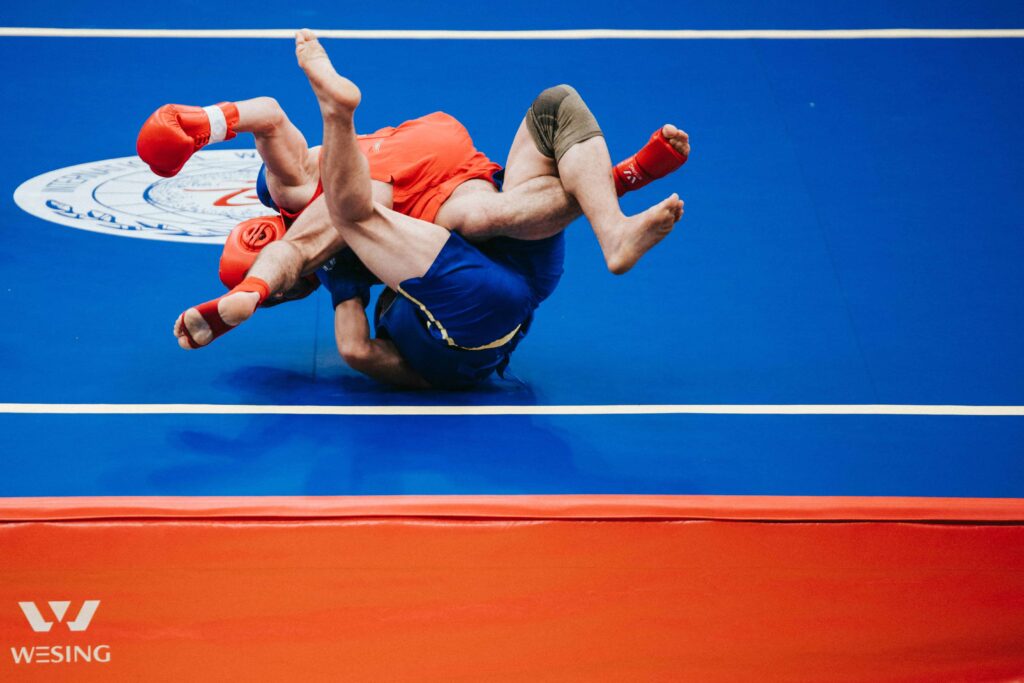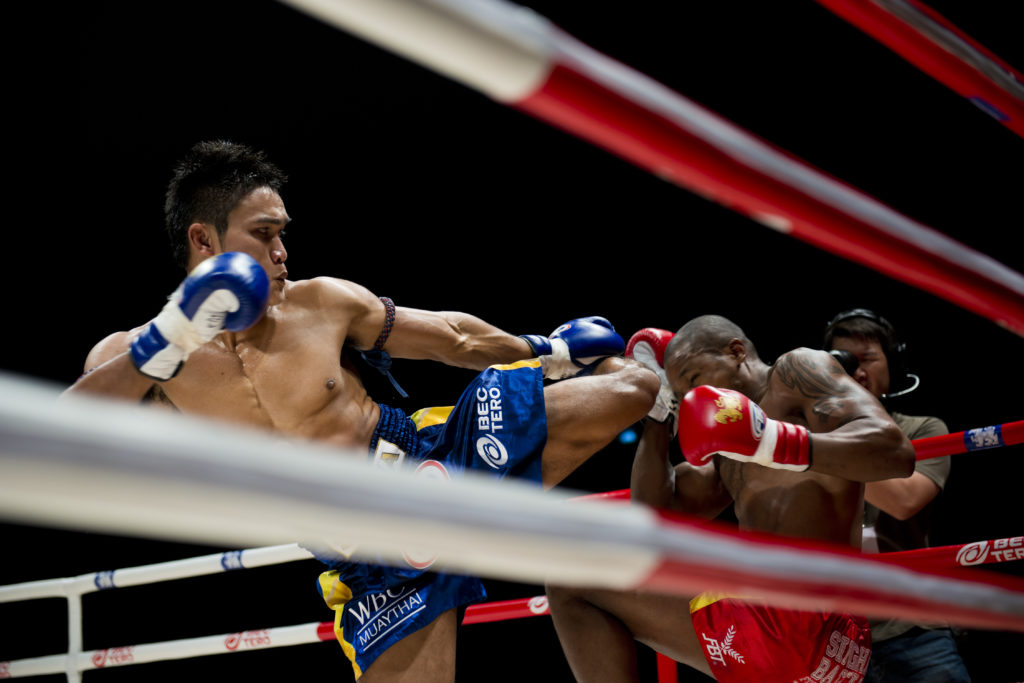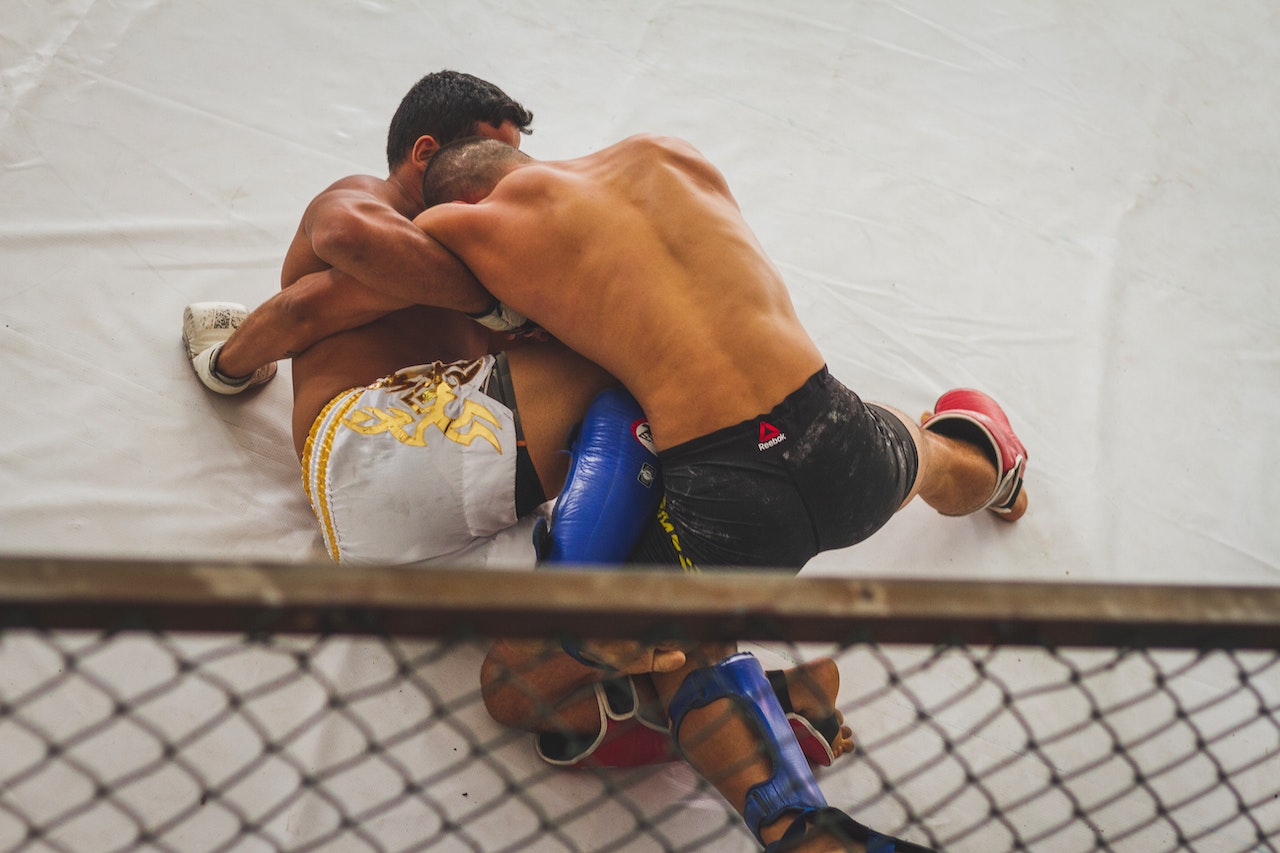MMA is not merely a sport; it’s a symphony of diverse martial arts styles harmoniously blending in the arena.
Focusing ona variety of martial arts including Brazilian Jiu-Jitsu, Boxing, Muay Thai, and Wrestling, this post dissects the pivotal role played by these disciplines in shaping the essence of MMA. Serving as a testament to the amalgamation of various martial arts, MMA offers a holistic combat experience.
This blog post explores the fundamental martial arts that constitute the backbone of the sport, shedding light on the strategies and techniques employed by fighters for success.
As a dynamic and ever-evolving sport, MMA demands a unique blend of skills from its participants. The sections that follow delve into the captivating and chaotic dance of the octagon, where fighters draw upon a diverse range of martial arts to gain the upper hand.
Ultimately, this comprehensive exploration seeks to answer the question: What martial arts are used in MMA, and why are some more prevalent than others?
Whether you’re a seasoned enthusiast or a newcomer to the sport, this blog post equips you with the knowledge to enhance your skills and elevate your performance in the thrilling world of MMA.
1. Wrestling
- Considered the most dominant martial art in MMA.
- Effective for takedowns, ground control, and limiting opponents’ striking abilities.
Wrestling emerges as a cornerstone discipline in MMA, enabling fighters to dictate the fight’s dynamics. Notable champions like Daniel Cormier and Khabib Nurmagomedov showcase the dominance of wrestlers in recent years. Wrestling skills are vital for controlling the fight, executing takedowns, and defending against them.

Wrestling stands tall as the most influential discipline in MMA, producing a significant number of champions across promotions like UFC, Bellator, and PFL. With a focus on takedowns, ground control, and unmatched physical conditioning, wrestlers dictate the pace and position of a fight.
The relentless work ethic instilled through grueling practices propels these fighters to the upper echelons of MMA. Noteworthy champions like Randy Couture and Dan Henderson showcase the adaptability of both folkstyle and Greco-Roman wrestling in the diverse landscape of MMA.
Wrestling, with its emphasis on takedowns and strategic groundwork, emerged as a vital martial art in MMA. World-class wrestlers like Dan Severn and the early UFC champions showcased the significance of wrestling in neutralizing opponents, especially those skilled in BJJ. Today, every UFC fighter incorporates wrestling into their training regimen for a well-rounded skill set.
2. Muay Thai
- Powerful roundhouse kicks, clinching techniques, elbows knees and punch combos.
Muay Thai, often hailed as the “Art of Eight Limbs,” stands out as the most cultured and effective striking art in MMA. Offering a versatile array of weapons, including fists, elbows, knees, and shins, Muay Thai practitioners, such as Jose Aldo and Anderson Silva, showcase the art’s effectiveness inside the cage.
Muay Thai, known for its versatile strikes and clinch work, is a force to be reckoned with in MMA. The effectiveness of leg kicks and the unique roundhouse kicks distinguish Muay Thai practitioners. Fighters like Anderson Silva, Jon Jones, and Jose Aldo showcase the enduring influence of Muay Thai in the octagon.

Eight contact points, including the formidable roundhouse kick, make Muay Thai indispensable in MMA.
Muay Thai and kickboxing, though technically distinct, share the spotlight as striking arts within MMA. Focused on punches, kicks, knees, and, in Muay Thai, elbows, these disciplines create stand-up specialists.
Fighters like Israel Adesanya, with a background in kickboxing, demonstrate the effectiveness of these arts in keeping the fight standing. As MMA evolves, stand-up specialists refine their skills to defend against ground assaults, ensuring a well-rounded approach.
3. BJJ
- Known for numerous submission holds and a focus on the guard position.
- Valuable for fighters on the ground, even for those with other primary martial arts.
Brazilian Jiu-Jitsu (BJJ) finds its roots in the UFC’s co-founder, Rorion Gracie, and has become indispensable in MMA. Legendary fighters like Royce Gracie demonstrated BJJ’s efficacy by securing victories through various submissions. The discipline’s evolution has made it a mandatory aspect of training for aspiring MMA fighters.
Embracing the ground, BJJ is an art of finesse that utilizes technique and leverage to triumph over sheer strength. And with submission holds targeting joints and chokes and strangles as its hallmark.
Brazilian Jiu-Jitsu (BJJ), a grappling art birthed by the Gracie brothers, took the spotlight early on. Royce Gracie’s dominance in UFC 1 showcased the effectiveness of BJJ’s focus on submissions and ground control. Its popularity soared, and BJJ became a cornerstone for MMA fighters, with submission wins remaining a staple in modern competitions.
4. Boxing
- Vital for MMA, emphasizing punches and footwork.
- Essential for hand striking skills.
- Intelligent distance management and head movement.
- Punching power, speed, accuracy, and defensive abilities.
Boxing, known as the sweet science, plays a crucial role in MMA. Basic striking techniques like jabs, crosses, hooks, and uppercuts are fundamental for any top-class fighter. MMA stars like Max Holloway and Georges St-Pierre highlight the significance of boxing skills in their successful careers.
With a history dating back over 3200 years, Boxing is one of MMA’s oldest sports. Evolving into an internationally recognized combat sport, it demands precision in techniques like uppercuts, crosses, and jabs. The emphasis on upper body strength and endurance makes it a captivating spectacle in the MMA arena.

While not a primary background for many elite MMA fighters, boxing plays a crucial role in developing striking abilities. The discipline sharpens a fighter’s punching power, head movement, footwork, and defensive tactics. Icons like Conor McGregor and Stipe Miocic, known for their striking prowess, highlight the integration of boxing into MMA training regimens.
Boxing, the art of punches and defensive maneuvers, has been a constant companion in MMA. Despite its vulnerability to kicks and takedowns, boxing skills are fundamental for any fighter. Adaptation is key, as demonstrated by fighters like Holly Holm and Cody Garbrandt, who seamlessly integrated boxing techniques into their MMA arsenals.
Other Valuable Martial Arts Used in MMA
While our spotlight is on BJJ, Boxing, and Muay Thai, the MMA palette extends beyond. Karate, Judo, Sambo, and taekwondo contribute hues to this vibrant canvas. These arts, though not the headliners, weave into the fabric of MMA, enriching the skill set of its practitioners.
Beyond the primary focus, MMA embraces other martial arts like karate, Judo, sambo, and taekwondo. While not the central theme, these arts contribute to the well-rounded skill set of MMA fighters.
MMA fighters are not confined to these styles. Several martial arts add diversity to the octagon, each with its unique flair.
Kickboxing, though not as comprehensive as Muay Thai, serves as a significant striking base in MMA. Fighters like Stephen Thompson and Israel Adesanya seamlessly transitioned from kickboxing to MMA, showcasing the effectiveness of their striking skills.
Originating from Russia, Sambo closely mirrors MMA, incorporating strikes and grappling with gi tops and shin guards. Sambo specialists seamlessly transition into MMA, exemplified by legends like Fedor Emelianenko and current UFC lightweight champion Khabib Nurmagomedov. The comprehensive nature of Sambo prepares fighters for the diverse challenges presented in the octagon.
Karate, a traditional Japanese kickboxing form, has seen limited use in MMA due to perceived ineffectiveness compared to Muay Thai. Yet, fighters like Stephen “Wonderboy” Thompson have proven that with the right adaptation, Karate can be a potent tool.
While overshadowed by wrestling, Judo has found its place in MMA. Former UFC Bantamweight Champion Ronda Rousey demonstrated the effectiveness of Judo throws and submissions.



